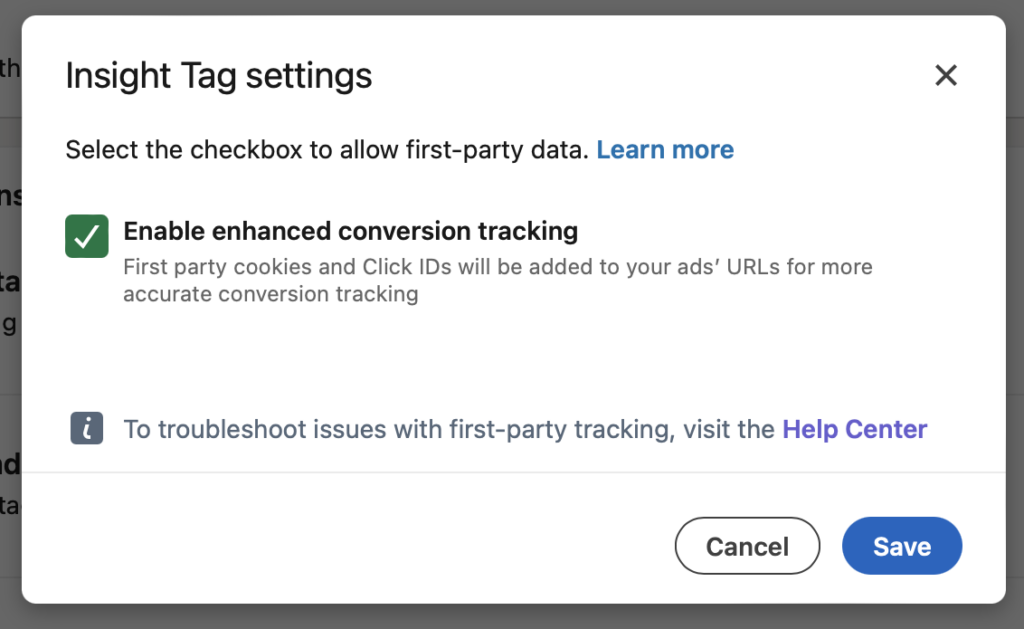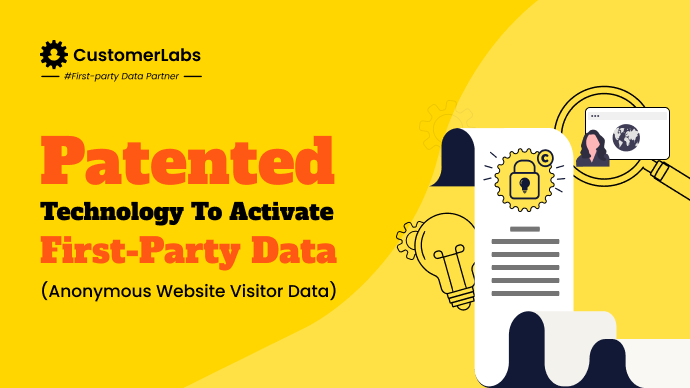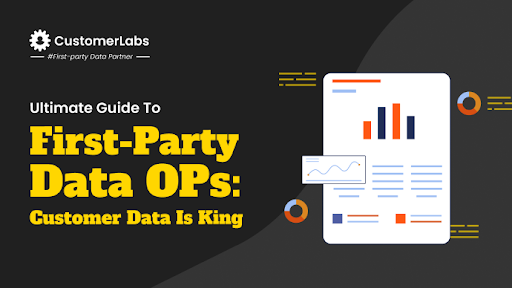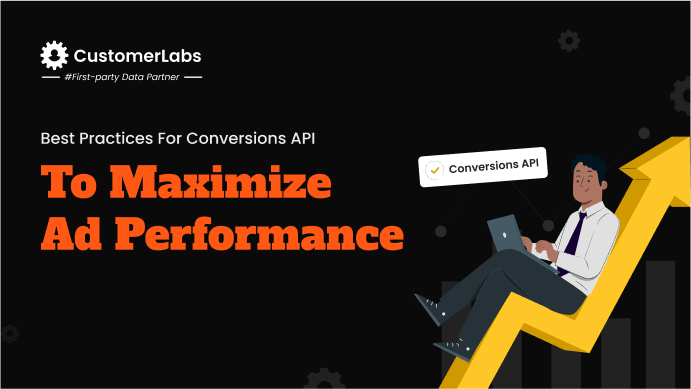
Personalized behavioral targeting with high-quality user data helps improve the performance of ad campaigns, is a well-known fact.
The entire digital world has been drastically hit by the data privacy updates making personalized behavioral targeting an uphill battle. Businesses were engulfed by turmoil due to these data privacy changes.
Impact caused by data privacy updates
Earlier, the marketers collected the user data using third-party cookies to provide personalized ad experience. But the recent data privacy laws (GDPR, CCPA, etc.) and updates such as iOS14.5+, and browsers deprecating third-party cookies have resulted in signal loss.
Due to the loss of audience signals, marketers were unable to track customers behavior, leading to
- Gap in the customer journey
- Low event match quality
- Reduced custom audience match rate
- Dip in ad campaign performance
- Decreased ROAS (return on ad spend)
In order to mitigate signal losses, you need to find a way to navigate the data privacy waters and save your ad campaign performance. The only ship that helps you sail through these tough tides is first-party data!
"First-party data is going to be a critical discussion and skill for marketing operations moving forward into 2024," says an expert from the Marketing Ops community.
What is first-party data?
First-party data is the information that a company collects directly with consent from the users. It includes behavior data of known users ( whose name, email ID, phone number, etc., are collected) and anonymous users (IP address, device ID, browser ID, click IDs [GCLID, FBC], user agent, etc., are collected).
For any business, its first-party data is valuable because it is
- Willingly provided by the users themselves (user-consented data)
- Accurate than third-party data
- Reliable
- Unique to your business
Why is first-party data important in 2024?
Moving ahead into 2024, ad platforms like Google and Meta are relying fully on first-party data.
Google Ads has explicitly mentioned “Use first-party data to power your ad strategy”

Meta released a report titled “The Importance of Good Data”, highlighting the importance of first-party data.

As the ad platforms are deprived of the user data because of the data privacy issues, finding the right audiences has become a herculean task for them. First-party data trains the ad algorithms with audience signals.
Feeding the ad platforms (Google Ads, Meta Ads, etc.,) with high-quality first-party data will help them find the right audience and target your ads to the right user.
Precise targeting using first-party data will help you offer a personalized ad experience to the users, resulting in better campaign performance.
"First-party data not only saves your ad campaigns from third-party cookie deprecation but also boosts your incremental revenue by around 10%!" says Google.
Collect First-Party Data From Various Sources
Online Source For First-Party Data Collection
The primary source of first-party data in the digital world is the website. Use server-side tracking tools to collect the data on the server-side in a privacy-friendly way. Set up conversion tracking to track all the conversions, or an event tracking that tracks all the user interactions (such as pages viewed, clicks, scrolls, etc.) on the website.
Other sources of first-party data
Users interact with the business on the offline platforms or the platform other than the website. These might include, phone call, in-store visit, events, webinars, surveys, social media, customer service and support, PoS purchase, and more. All these interactions with the data are generally fed into a CRM.
Real First-Party Data
The real first-party data is the combination of your user data across both online and offline sources. As discussed above, your average customer has multiple touchpoints. Integrating all these touchpoints into one will provide you a complete picture of your customer journey, which is the real first-party data.
Using any tool, combine all these data across multiple channels into one. For example, you can use CustomerLabs 1PD Ops to bring in the data from your website, CRM, PoS, payment subscription systems, and many more into one single place.
Furthermore, it provides a complete 360-degree view of the customer, also called the single customer view, by unifying all these data points using stitcher, the advanced identity resolution technology.
Segment First-Party Data For Better Personalization
First-party data comes with complete user data including their behavior. Every user is different, yet, there is some commonality that is useful from the marketing perspective or the business perspective.
Let’s say, you have a new product launch in the women category of your eCommerce business and you want to target only women for the ads related to this product. You can segment your first-party data based on gender and run your campaign.
The above is a very specific example but with first-party audience segmentation you can
- Understand your customers better,
- Tailor your messages and offers to their needs and interests,
- Increase your conversion rates and customer loyalty,
- Reduce your marketing costs and waste
You can segment your first-party audience into smaller groups based on their characteristics, behaviors, and preferences. Some of the common segmentation methods are:
Demographic segmentation
Segment your audience data based on demographics (age, gender, location, income, education, etc.). This can help you to target your customers based on their general profile and needs.
Behavioral segmentation
Based on your user behavior and their interactions with your business (such as website visits, app usage, purchase history, email engagement, social media activity, etc.), you can segment them. This helps you target your customers based on their actual behavior and intent.
Psychographic segmentation
Segment the first-party data based on the attitudes, values, opinions, and lifestyles of your customers, such as their personality, interests, hobbies, preferences, etc. This can help you to target your customers based on their deeper motivations and aspirations.
Value-based segmentation:
The most important and mostly not much considered way to segment the audience, value-based segmentation. Segment your customers based on the value (such as their lifetime value, customer acquisition cost, etc.) and profitability your customers offer for your business. With this audience segment, you can target your customers based on their potential and contribution to your business.
Smart Audience Segmentation:
Smart audience segmentation is the advanced segmentation strategy that the ad platforms do not offer by default. Using smart audience segmentation, you will activate the inactive and high intent users. For example, you can segment the users who
- Cart_abandoned for more than 30 days
- Product_viewed_not_ added_to_cart in the last 45 days
- Product _viewed_more than three times but not purchased
- Segment the users who have wishlisted for more than ten products
- Last year’s Christmas season sale website visitors
To leverage smart audience segmentation strategies and activate your first-party data, tools like CustomerLabs 1PD Ops help you.
Right Way To Activate First Party Data In 2024
Activating first-party data means seeing the true power of your data. It can be done by sending your first-party data to ad platforms (such as Google Ads, Meta Ads, etc.), email platforms (such as mail chimp, klaviyo), WhatsApp, or any other platform.
Ad platforms like Meta have come with tools that provide a robust mechanism for sending first-party data without any signal loss. To navigate 2024 and the future, I can’t think of any other way than leverage these tools to send your first-party data to ad platforms.
Conversions API
Meta Conversions API (CAPI)
Facebook designed Conversions API, a tool to send your first-party data directly to Meta’s servers. Using FB CAPI, you can send all your first-party data in a secure and privacy-centric way to Meta without any signal loss. Personally identifiable data like the name, email address, phone number must be hashed with SHA256 and sent to Meta using CAPI to be in compliance with data privacy laws such as the GDPR.
As a standard practice, Facebook recommends using conversions API along with the Facebook pixel advanced matching for web manual implementation, to get the best results.
LinkedIn Conversions API (CAPI)
Conversions API was launched by LinkedIn, following the steps of Meta to send your first-party data to its servers. LinkedIn CAPI, just like Meta’s offers you to sync your first-party data without any signal loss. While there are no major results from how LinkedIn Conversions API performs, Meta’s CAPI results can be looked at to understand how it might work here as well.
LinkedIn brought in an interesting ID that’s different from fbclid or gclid which change for each click of the user on the ad. Li_fat_id or the LinkedIn first party ad tracking unique user ID, is an ID that appends at the end of the URL similar to fbclid, but can be stored in the first-party cookie of the user’s browser, and is unique to each user. Therefore, if you can capture, store and send this ID to LinkedIn Ads, your match rates will be high, leading to maximized ad campaign performance.
Here’s how if you want to leverage Li_fat_id. Alternatively, read the full blog here.

Enhanced Conversions and Web Conversion Tracking
To send the data securely to Google Ads, there are two ways
- Set up conversion tracking directly using Google Ads tag on your website
- Use GA4 to send conversion data after installing GA4 tag to collect your first-party data on the server-side
Along with this, Google also recommends you to turn on enhanced conversion to improve the accuracy of your conversion data. Enhanced conversions for web is an add-on feature that aids your conversion tracking by collecting email address, phone numbers, names and other data from the forms on your website in an hashed manner. It helps Google identify and match your users to the Google accounts.
The first-party data helps Google optimize your smart bidding strategies with accurate conversion data and helps it expand the audience net to find the right audience.
Tip: Setting up enhanced conversions, conversion tracking and conversions API will also fix your attribution issues as the ad platforms get the complete user data from the server-side
Leveraging Power of First Party Data in 2024 on Google and Meta Ad Campaigns
Meta launched the Advantage+ Shopping Campaigns; Google launched the Performance Max Campaigns and Demand Gen Campaigns. If there’s one commonality among these recent ad campaigns, it is – “All these are driven by first-party data”.
First-party data in Meta’s Advantage+ Shopping Campaigns (ASC)
Facebook advantage+ shopping campaigns (or the A+SC / ASC) are part of Facebook’s advantage plus suite, which uses machine learning to help you reach valuable audiences with less setup time and greater efficiency. Advantage+ shopping campaigns are designed to be the most efficient solution for performance-focused advertisers looking to drive online sales with less effort.
With advantage+ shopping campaigns, you can combine prospecting and existing customer audiences under one campaign, and show personalized products from your catalog to your customers across Facebook, Instagram, Messenger, and Audience Network.
One of the key inputs for ASC is your first-party data, which helps Meta’s machine learning algorithms to identify and target your highest value customers. You can sync your first-party data with Facebook as custom audiences, and use them as audience signals in your advantage shopping plus campaigns.
By using first-party data as audience signals, you can improve your campaign performance in several ways, such as:
- Increasing your conversions and ROAS by showing personalized products from your catalog to your existing customers who have already shown interest in your brand.
- Finding new customers who are similar to your existing customers, and expanding your reach.
- Simplifying your campaign setup and management by running fewer campaigns without the need to adjust or refresh.
Below is a screenshot of the ASC campaign performance that shows the increase in conversion rate by 4X times.

First-party data in Google’s Performance Max Campaigns
Google performance max campaigns (PMax Campaigns) aims to connect your marketing efforts throughout the Google advertising universe (Google Search, Discover, YouTube, Google Display Network, Google Maps, and Gmail), maximizing your performance by optimizing your ad spend.
Performance max campaigns use automation and machine learning to achieve the best possible results for your campaign objective, which can be sales, leads, or website traffic.
The machine learning algorithms of PMax learn from your first-party data. You can add your data segments as audience signals in your performance max campaigns, which will give Google more information about your existing customers and website visitors. Google will use them to learn from your audience and find more potential customers across its network.
By using first-party data as audience signals, you can improve your campaign performance in several ways, such as:
- Expanding your reach and finding new customers who share similar characteristics and behaviors with your existing customers.
- Increasing your conversions and return on ad spend (ROAS) by showing your ads to the most relevant and high-value customers for your business.
- Gaining more insights into your customers and their journey across different Google platforms and formats.
First Party Data To Create value-based audiences
Value-based audiences are segments of your audience that have a high potential value for your business. They are based on your first-party data, such as purchase history, lifetime value, loyalty, or engagement.
By creating value-based audiences, and syncing them with ad platforms, you can convey to the ad platforms which audience is of high value. Leveraging the value-based audience, ad algorithms will target your ads more effectively and efficiently to the people who are most likely to convert, buy more, or stay loyal.
To create value-based audiences, you need to:
- Collect and analyze your first-party data to identify your most valuable customers and prospects
- Use a First Party Data Ops (1PD Ops) or a CRM to segment your audience based on their value attributes
- Export your segments to your ad platforms, such as Google Ads or Facebook Ads
- Use your segments as custom audiences for your ad campaigns
Tip: You can use Google’s Value Based Bidding to let Google know which conversions are of high value and which are of low value.
Value-based lookalike audiences
Value-based lookalike audiences are segments of new people who are similar to your existing value-based audiences. They are created by ad platforms using machine learning algorithms that match your first-party data with the data of millions of users.
By using value-based lookalike audiences, you can expand your reach and find more high-value prospects who are likely to be interested in your products or services. You can also optimize your ad performance and ROI, as you can bid higher for more valuable impressions.
To create value-based lookalike audiences, you need to:
- Create value-based audiences as described above
- Upload your value-based audiences to your ad platforms, such as Google Ads or Facebook Ads
- Select the option to create lookalike audiences based on your value-based audiences
- Choose the size and location of your lookalike audiences
- Use your lookalike audiences as targeting options for your ad campaigns
Demand Gen Campaigns in Google Ads allow you to find lookalike audiences. Leverage this lookalike audience feature in Google Ads to find the high-value customers when you sync your first-party data with value.
First-party data To Activate Your Full-funnel On Facebook and Google Ads
Full-funnel marketing is a strategy that takes into consideration all levels of the funnel, from awareness to consideration to purchase and beyond. It aims to deliver relevant and consistent experiences to your audience throughout their customer journey, and nurture them towards your desired outcomes.
To realize the full-funnel,
1. Segment your first-party audience based on their funnel stage
- Awareness: Potential prospects whom you can find using the lookalikes of your first-party data (all users)
- Consideration: Custom audiences from your website visitors, app users, or email subscribers who have shown interest in your product or service by viewing a product page, adding an item to cart, or signing up for a trial.
- Purchase: Users who have initiated a purchase or completed a purchase can be segmented at this stage.
- Retention: Segment of your existing customers to increase their LTV or increase their retention period.
- Advocacy: Segment your existing customers to make them advocates of your product/brand.
2. Create different types of ads and messages for each stage
- Awareness: Potential prospects whom you can find using the lookalikes of your first-party data and show messages / ads they might resonate with.
- Consideration: Use your first-party data (custom audiences from your website visitors, app users, or email subscribers) to target users who have shown interest in your product or service (such as by viewing a product page, adding an item to cart, or signing up for a trial) with ads that provide more information, testimonials, reviews, or comparisons.
- Purchase: Use first-party data to target users who have initiated or completed a purchase, with ads that encourage them to complete their purchase, upsell or cross-sell related products or services, or offer them discounts or free shipping.
- Retention: Target your customers with ads/emails that thank them for their purchase, and ask them for feedback, provide them with support, or invite them to join your loyalty program.
- Advocacy: Target your existing customers with ads/emails that ask them to share their experience, write a review, rate your app, or join your community.
You can also use your first-party data to measure and optimize your ad performance across the funnel, and attribute your results to your ad campaigns.
Success Stories Of First-Party Data
First Party Data Success For Lead Gen Business
Dundas Life, a Canadian life insurance company has shifted to the first-party data using CustomerLabs 1PD Ops, the first-party data partner. To save their campaign performance, they have seen first-party data only as the savior of the day. However, the results first-party data has provided were remarkable.
Below are the results Dundas Life witnessed by leveraging the full power of first-party data by using all the privacy-preserving tools such as Conversions API.

“CustomerLabs has been an absolute game-changer for Dundas Life. With their 1PD Ops, we’re not just tracking events for our ads accurately; we’re improving their performance!” says Dundas Life’s co-founder, Martin
Read the full case study here – Dundas Life reduced their CPL by 60%!
Success Of India’s Largest Women’s Fashion eCommerce Business With First-Party Data
W for Woman is India’s largest women’s fashion eCommerce business that adopted first-party data since 2019. Their right choices in marketing strategies have borne fruits.
Where Google was only talking about around 11% revenue lift when using first-party data, W for Woman has seen around 20% increase in incremental revenue. See the results for yourself below:

Read the full case study here – W for Woman First-party Data Case Study
When W for Woman used their first-party data in the latest advantage+ shopping campaigns and have seen that first-party data has 4X times higher conversion rate as compared to the new customers conversion rate. Below is the screenshot of their campaign performance metrics.

Do you want to navigate the fierceful data privacy waters in 2024 and ahead? Start using first-party data and reap the benefits it offers. Talk to the first-party data experts now!






